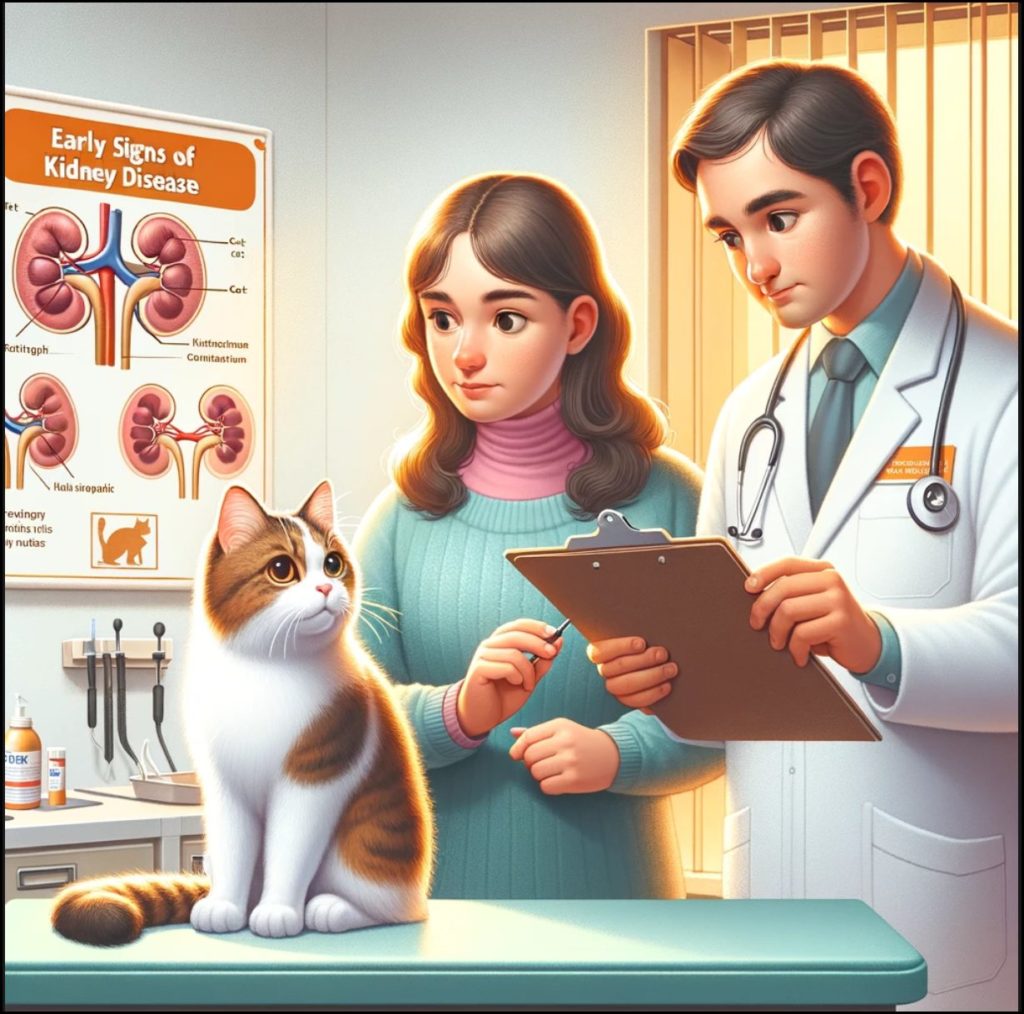Good morning, dear readers! Today, we delve into a crucial topic for every cat owner: cat kidney disease. This silent ailment can catch many off guard, but being aware of the early warning signs is key to ensuring your feline friend’s health and wellbeing. Kidney disease in cats, often a stealthy predator, requires a keen eye to detect its early whispers. Let’s explore these signs and what they mean for your beloved pet.

Understanding Cat Kidney Disease
Before we dive into the symptoms, let’s briefly understand what cat kidney disease entails. Kidneys are vital organs that filter waste from the blood, maintain hydration, and regulate essential minerals. When they malfunction, it can lead to a buildup of toxins in your cat’s body, with potentially dire consequences.
Early Warning Signs to Watch For
1. Changes in Water Consumption and Urination
One of the earliest signs of kidney disease in cats is a change in their drinking and urination habits. You might notice your cat drinking more water than usual or urinating more frequently. This happens because their kidneys struggle to concentrate urine, leading to increased water loss.
2. Weight Loss and Decreased Appetite
Weight loss and a decreased appetite can be early indicators of kidney issues. Cats with kidney disease often lose their appetite, leading to gradual, noticeable weight loss. If your cat is eating less or showing disinterest in food, it’s time to pay attention.
3. Lethargy and Weakness
A general sense of lethargy or weakness is a common symptom in cats with kidney disease. They may seem less playful, sleep more, or show a lack of interest in activities they once enjoyed.
Understanding the Diagnosis and Treatment
1. Diagnosing Cat Kidney Disease
If you suspect your cat has kidney disease, a visit to the vet is crucial. They will likely conduct blood tests, urine analysis, and possibly ultrasound to assess kidney function and structure. Early diagnosis can make a significant difference in managing the disease.
2. Treatment Options
While there is no cure for chronic kidney disease, early intervention can slow its progression. Treatment focuses on managing symptoms and may include dietary changes, medications, and in some cases, fluid therapy.
Preventative Measures and Regular Check-Ups
Regular vet check-ups are vital for early detection and management of cat kidney disease. Additionally, ensuring your cat has a balanced diet and access to fresh water can help maintain kidney health.
In conclusion, being vigilant about the early warning signs of cat kidney disease is essential for every cat owner. Early detection and treatment can significantly improve the quality of life for your feline friend. Remember, your cat relies on you to be their advocate for health and happiness. Stay observant, and always consult your vet if you notice any concerning changes.
For more information on cat kidney disease, visit authoritative sources such as the Cornell Feline Health Center or the American Veterinary Medical Association.
Stay tuned to our blog at homewithcats.com for more insightful articles about your beloved pets!






One thought on “Cat Kidney Disease-Early Warning Signs You Need To Know”